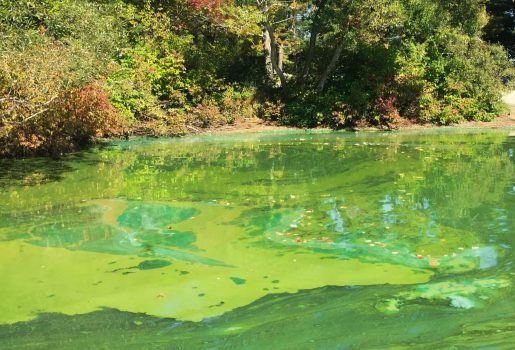In 2023, shoreline cyanobacteria blooms occurred around the lake in early September and late October. Cyanobacteria are generally a symptom of excessive stormwater running into the lake.
Cyanobacteria (commonly called blue-green algae) are microscopic organisms, technically bacteria, that use photosynthesis to make their own food. They are naturally occurring in the phytoplankton of the lake, however, warm water and rich nutrients like phosphorus and nitrogen from runoff can cause cyanobacteria to bloom and grow out of control. Blooms look like bright green scum on the water surface or in the water column, and can produce toxins that can be harmful to humans and pets. We suspect that the heavy rains and runoff washing nutrients into the lake in 2023 contributed to the blooms, and have confirmed that the October bloom was producing the toxin Microcystin.
What does this mean to you?
If you see cyanobacteria near your shoreline, please report to the WLA using our Contact Us Form so we can collect samples. Unfortunately, it takes time to get results from toxin tests but we can confirm quickly whether it is cyanobacteria or something less concerning. It is recommended that you do not drink green water, or allow your dogs or children to play in cyanobacteria scums (see Maine DEP Cyanobacteria for more information). If blooms progress and become more frequent, they can affect oxygen levels in the lake, fish production, and loon food sources. Lake wide blooms can decrease property values and affect recreational activities.

What can you do to help?
You can help by controlling stormwater runoff from your property to the lake. Limit the use of fertilizers, pick up animal waste and dispose of it away from the watershed, get septic systems inspected, and plant buffer vegetation. The Maine LakeSmart Program provides free advice and ideas on how to limit runoff on your property, use our Contact Us Form to set up a free property evaluation. To learn more about Cyanobacteria in Maine Lakes and how to avoid it on Watchic Lake see Maine DEP Algal Blooms in Maine Lakes.


